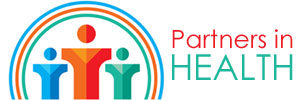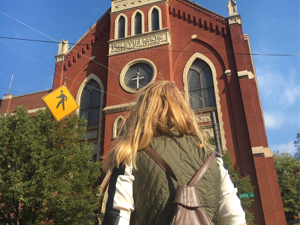
Reprinted from the spring 2018 issue of The Ohio Family Physician.
By Megan Rich, MD; Tyler Waid; and Joe Kiesler, MD.
On a sunny October morning, eight family medicine interns gathered in front of The Christ Hospital near downtown Cincinnati. Three months into their residency program and their clinical skills were growing strong with each passing day.
But on this particular day, these future family physicians would not be caring for patients or participating in didactic lectures, instead they were going to walk a mile in their patients’ shoes.
For the past 10 years, every intern class at The Christ Hospital/University of Cincinnati’s Family Medicine Residency Program has taken a unique experiential learning opportunity that allows the resident to become the patient.
Through this experience, each resident learns not only about the cultural behaviors of their patients, but also about the neighborhoods in which their patients live. And every year, this important teaching opportunity addresses a common practice in family medicine, screening for social determinants of health (SDOH).
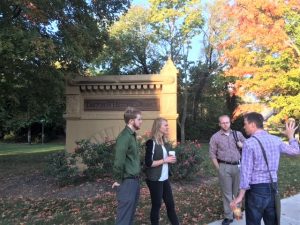 Although, residents are mentored by family physicians, The Family Medicine Center (FMC) at The Christ Hospital collaborates with community partners (social agencies, nonprofits, and individuals benefiting from community services) to teach residents about SDOH.
Although, residents are mentored by family physicians, The Family Medicine Center (FMC) at The Christ Hospital collaborates with community partners (social agencies, nonprofits, and individuals benefiting from community services) to teach residents about SDOH.
FMC, home of the resident continuity clinic, is located in Over The Rhine (OTR), a historic community, with a population of more than 15,400 people, according to 2010 US Census Bureau data.
Despite gentrification, OTR still suffers from the distinction that more than 30% of its residents live below the federal poverty line, the area has more than twice the average crime rate in Ohio, and endured race riots as recently as 2011.
The largest population of FMC patients live in OTR or similar communities, often incurring negative effects from SDOH. Many of these patients often tell their family physicians about food insecurities, concerns about neighborhood safety, poverty, unemployment, and lack of social connectedness.
With all these factors encompassing the health outcome of OTR patients, few resident physicians have ever experienced living conditions similar to those in the OTR neighborhood. Residents training in family medicine, many of whom train in programs that care for vulnerable populations, need a strong curriculum in both diagnosing and treating SDOH.
Through this field experience, residents work in teams with a faculty member and are given an itinerary of scheduled appointments throughout the morning. Using public transportation, they navigate bus schedules to meet with social service agencies such as the Hamilton County Job and Family Services, Legal Aid, the Free Store Food Bank, and St. Vincent de Paul Charitable Pharmacy.
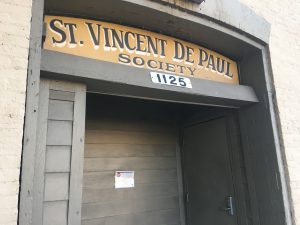 Created to replicate the experience of what a patient would encounter in a regular day, these appointments with community partners (representing social service agencies) are relevant resources a patient may need such as health insurance, supplemental food sources, access to affordable prescriptions, or legal assistance. Resident physicians learn not only about the network of services that are available for patients, but how to help patients connect to them.
Created to replicate the experience of what a patient would encounter in a regular day, these appointments with community partners (representing social service agencies) are relevant resources a patient may need such as health insurance, supplemental food sources, access to affordable prescriptions, or legal assistance. Resident physicians learn not only about the network of services that are available for patients, but how to help patients connect to them.
At lunch, both teams of interns meet at Venice on Vine, a job-training program for people who have barriers to employment. Individuals within the program have either experienced generational poverty, lack of access to a quality education, a history of drug addiction, and/or a history with the court system.
Employees of Venice on Vine share their stories about enrolling in the program and how the training impacts their lives. They describe the health care barriers they have encountered and give the residents advice on how they can be helpful to patients living in OTR.
With reference to their own privilege, many residents, after their experience, reflect on SDOH and how basic nutrition is taken for granted. Residents also frequently mention the unreliable and complex public transportation system that creates challenging struggles for navigating from appointment to appointment.
“I generally have my own agenda before going into a patient visit, and my recommendations and interventions for health will not have a great impact if my patient cannot even get basic nutrition,” said Michael Putnum, MD.
“Riding the bus to our appointments (including finding correct change, getting to the bus stop on time, and getting off at the right stop) was very cumbersome – it made me think about factors that I had never really considered,” said Dr. Jeffrey Murphy.
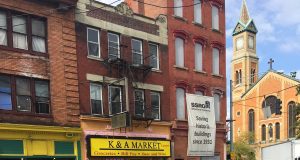 Community partners who host the residents at their appointments throughout the day are enthusiastic about their teaching roles. They enjoy having the residents at their agencies and feel that the experience is crucial in helping new physicians gain patient perspective and awareness of SDOH.
Community partners who host the residents at their appointments throughout the day are enthusiastic about their teaching roles. They enjoy having the residents at their agencies and feel that the experience is crucial in helping new physicians gain patient perspective and awareness of SDOH.
“Our participating trainees and staff seem to be pleased with communicating and sharing their experiences as they relate to the medical care they receive,” said Gloria Cure, human resources coordinator for Venice on Vine.
Teaching about SDOH and community resources is an important aspect of family medicine. This learning experience helps residents consider and better understand the patient perspective and embrace a community-based team approach to the care of patients whose health and clinical care are complicated by environmental or socioeconomic factors.
Watch a video of the educational experience and resident reflections.
If you are interested in planning a community learning experience on SDOH, download a “how-to” guide.



